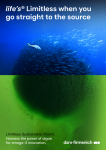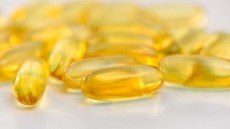ALA can benefit dry eye syndrome
of dry-eye syndrome, according to American researchers.
Dry-eye syndrome causes distress to the eyes, damage to the cornea and insufficient tear flow and affects about 10 million Americans who are mostly women.
It occurs more often among people with a history of arthritis, gout, diabetes, thyroid disease and smoking.
The researchers, Saadia Rashid at the Schepens Eye Research Institute in Boston, Massachusetts, and Professor Reza Dana, the director of the Massachusetts Eye and Ear Infirmary Cornea Service, found the application of ALA drops led to a reduction in the symptoms of dry eye syndrome in mice.
"The current study for the first time demonstrates the benefit of topical application of a particular fatty acid in treating the signs of dry eye syndrome at both the molecular and cellular levels," said Dr Dana.
"Using topical formulations of fatty acids to treat dry eye would allow for more flexibility for treatment, including lessening side effects that patients can experience from oral intake of fatty acids.
Clinical studies with topical fatty acids are being planned, which if successful could alter the method by which this common condition is treated."
ALA is a long-chain omega-3 fatty acid traditionally associated with heart health benefits.
It cannot be made in the body and is commonly found in canola, flax, soy, perilla, and walnut oils.
The study, published in the February issue of the Archives of Ophthalmology , tested three formulations of fatty acids: 0.2 per cent ALA; 0.2 per cent linoleic acid (an omega-6 fatty acid) and 0.1 percent alpha-linolenic acid combined with 0.1 percent linoleic acid.
One of the three formulations was applied to the eyes of mice for ten days with measurements taken every 24 hours.
A control group received no drops.
ALA benefits Those treated with the pure ALA showed a 45 per cent less corneal damage than untreated eyes and those treated with linoleic acid after five days.
Those treated with the combination dose also showed significant reduction in symptoms.
By day 10, those mice receiving ALA showed a 71 per cent improvement compared with the untreated and linoleic acid-treated group.
However the mice receiving the combination treatment had their earlier gains reversed.
Overall, treatment with ALA significantly reduced the number of immune cells derived from monocytes and macrophages on average 40 per cent in both the centre and periphery of dry eye corneas, compared with controls and other treatment groups.
The researchers found expression of the pro-inflammatory mediators IL-1a and TNF-a in the corneas exhibiting dry eye syndrome showed slight increases in IL-1a production from day two to day 10, but large and significant increases in TNF-a production by days five and 10, compared with baseline and day two.
The cytokines IL-2, IL-6 and IL-10 were not detected in dry eye corneas.
In contrast, the conjunctiva - the lining of the eyelid and eyeball excluding the cornea - showed significantly increased cytokine expression in dry eye syndrome, with increases varying from 5-fold for IL-2 to 98-fold for IL-10 by 10 days.
Treatment with ALA, but not with any other fatty acid, resulted in a significant decrease in IL-1a at day 10 and TNF-a at day five.
Source Topical omega-3 and omega-6 fatty acids for treatment of dry eye.
Archives of Ophthalmology 2008;126:219-225 Authors: Rashid S, Jin Y, Ecoiffier T, Barabino S, Schaumberg DA, Dana MR.











